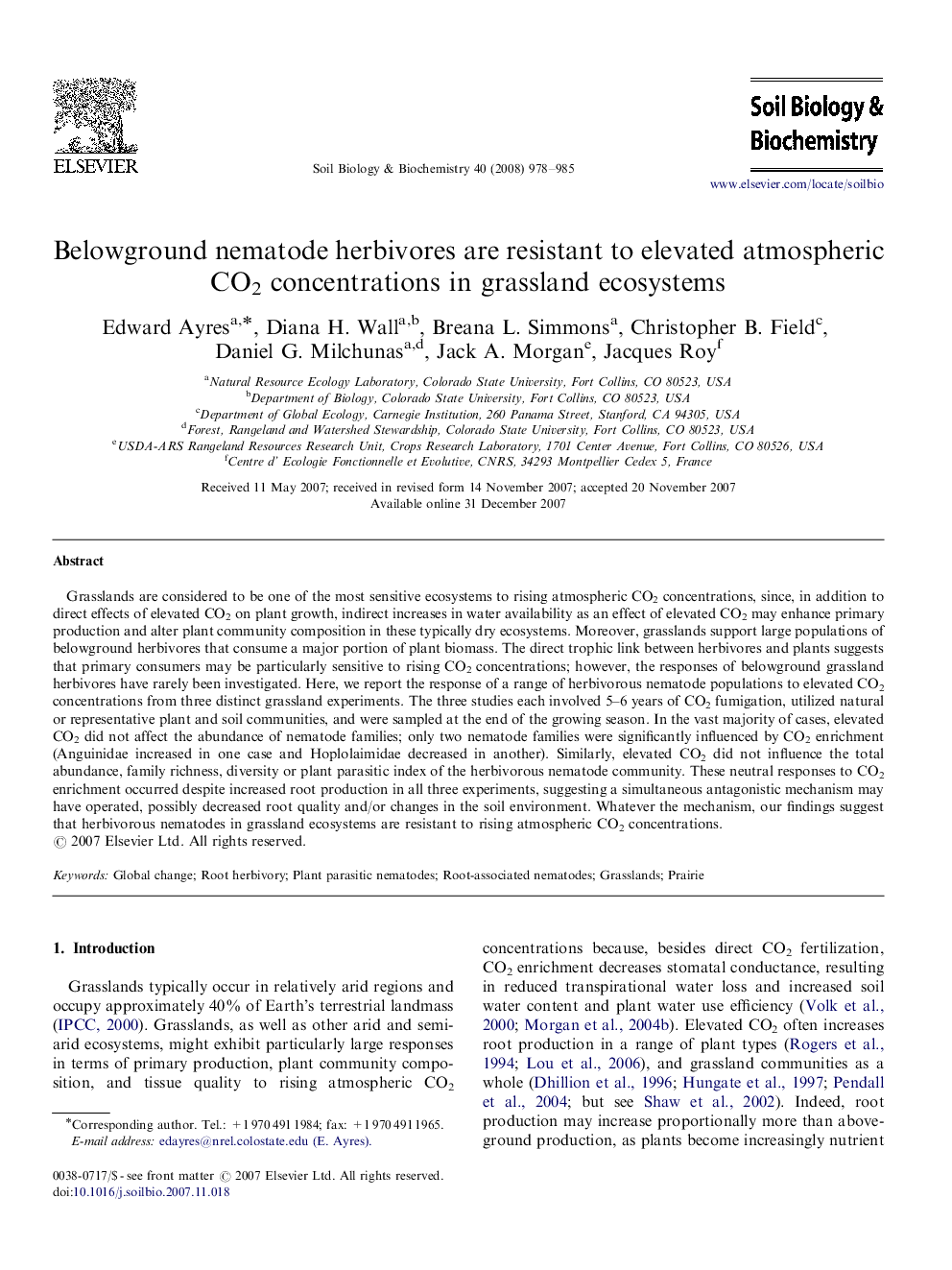| کد مقاله | کد نشریه | سال انتشار | مقاله انگلیسی | نسخه تمام متن |
|---|---|---|---|---|
| 2026450 | 1070030 | 2008 | 8 صفحه PDF | دانلود رایگان |

Grasslands are considered to be one of the most sensitive ecosystems to rising atmospheric CO2 concentrations, since, in addition to direct effects of elevated CO2 on plant growth, indirect increases in water availability as an effect of elevated CO2 may enhance primary production and alter plant community composition in these typically dry ecosystems. Moreover, grasslands support large populations of belowground herbivores that consume a major portion of plant biomass. The direct trophic link between herbivores and plants suggests that primary consumers may be particularly sensitive to rising CO2 concentrations; however, the responses of belowground grassland herbivores have rarely been investigated. Here, we report the response of a range of herbivorous nematode populations to elevated CO2 concentrations from three distinct grassland experiments. The three studies each involved 5–6 years of CO2 fumigation, utilized natural or representative plant and soil communities, and were sampled at the end of the growing season. In the vast majority of cases, elevated CO2 did not affect the abundance of nematode families; only two nematode families were significantly influenced by CO2 enrichment (Anguinidae increased in one case and Hoplolaimidae decreased in another). Similarly, elevated CO2 did not influence the total abundance, family richness, diversity or plant parasitic index of the herbivorous nematode community. These neutral responses to CO2 enrichment occurred despite increased root production in all three experiments, suggesting a simultaneous antagonistic mechanism may have operated, possibly decreased root quality and/or changes in the soil environment. Whatever the mechanism, our findings suggest that herbivorous nematodes in grassland ecosystems are resistant to rising atmospheric CO2 concentrations.
Journal: Soil Biology and Biochemistry - Volume 40, Issue 4, April 2008, Pages 978–985